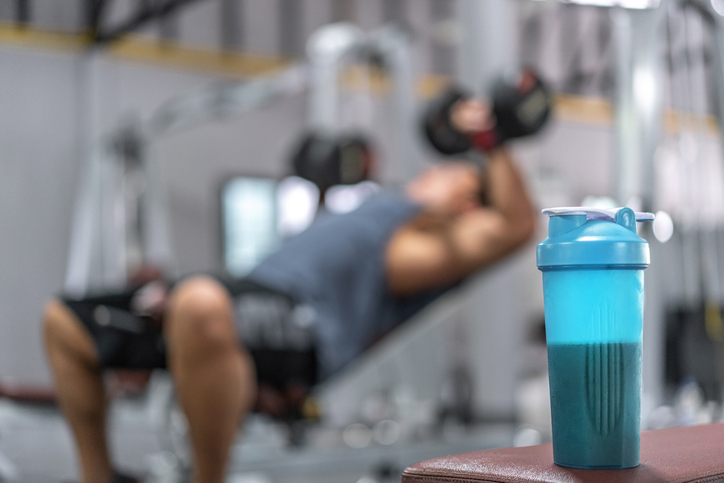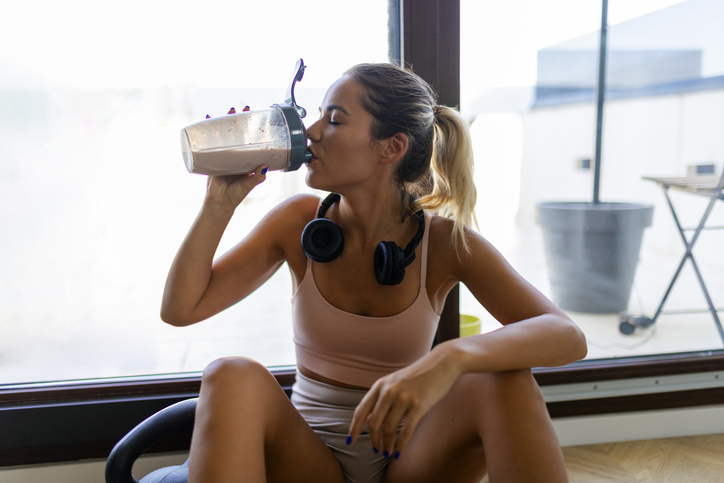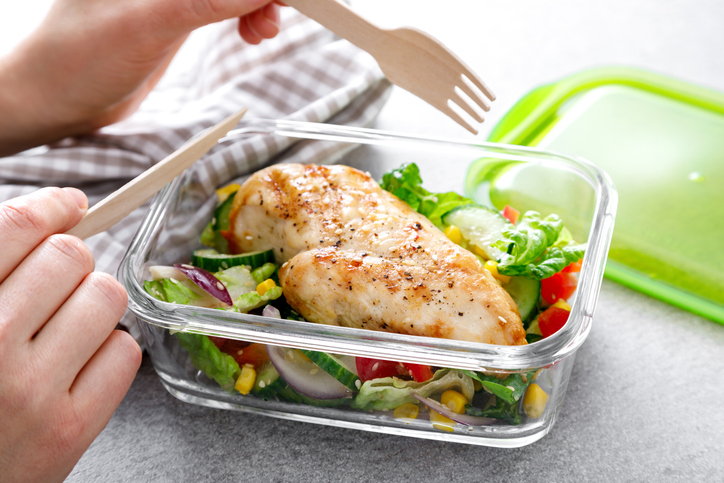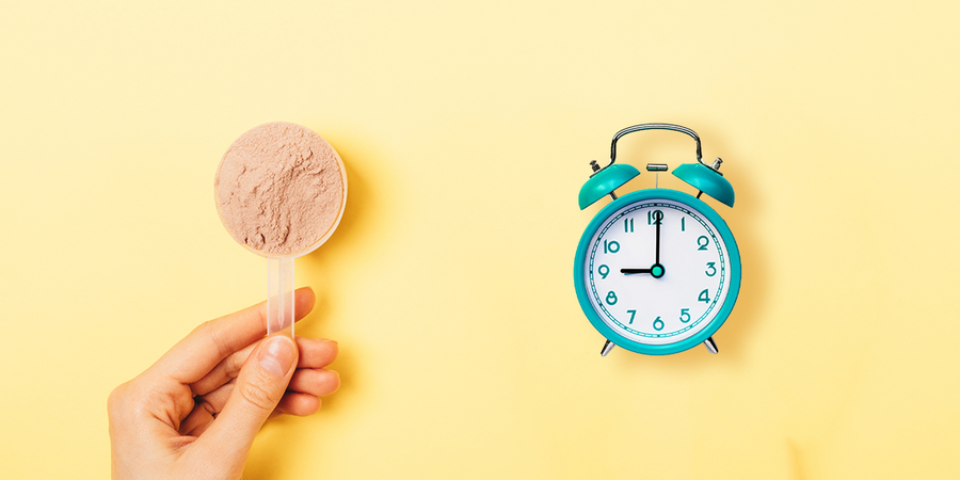No one argues that what you eat plays a crucial role in your overall fitness, body composition, and athletic performance. To build your muscles, you need to be eating plenty of protein. But what about when you eat it?
Many trainers and fitness pros will refer to the post-workout “anabolic window” and tell you (between sips of a recovery shake) that nutrient timing is everything. They believe that protein intake needs to be timed with the accuracy of a Swiss watch to specific periods when muscles are especially receptive to it (such as after a workout).
But the latest research suggests that effective fueling may not be as time-sensitive. As long as you eat regularly throughout the day, you may have hours (not minutes) to take in muscle-growing protein post-workout.
Keep reading to find out why time is on your side when it comes to the “anabolic window” but also why protein should still be your priority after any workout.
What Is the Anabolic Window Theory?

The anabolic window theory suggests you have a brief (30- to 60-minute) post-workout timeframe to consume adequate nutrients — most specifically, protein — to maximize muscle recovery and repair.
What happens when that half-hour window closes? Catabolism (the breakdown of tissues) outpaces anabolism (the growth of tissues), diminishing your potential muscle growth and strength gains — or so the theory goes. But recent research tells a slightly different story.
What Do Experts Say About the Anabolic Window?
Recent scientific findings suggest that the post-workout anabolic window lasts about four to six hours — not 30 minutes. In a meta-analysis published by the Journal of the International Society of Sports Nutrition, the authors concluded that total daily intake of protein trumps specific timing when it comes to building muscle.
Does that mean you should ditch your post-workout shake? Not at all. If it has been more than a few hours since your last protein-heavy meal, or your next one is a couple hours away, that post-workout shake is still a powerful tool in your muscle-building arsenal.
Plus, research has shown that people who consume a protein supplement post-workout build more lean mass (i.e., muscle) than those who don’t — likely because it helps boost their overall daily protein intake.
To pack on muscle, evidence suggests that a range of 1.4 grams to 2.2 grams of protein per kilogram of body weight per day can be effective. For example, an individual who weighs 150 pounds should strive to consume at least 95 grams of protein per day. One serving of Beachbody Performance Recover delivers 20 grams of protein, so consuming one scoop after exercising covers a significant portion of your daily goal.
How Much Should I Care About the Anabolic Window Theory?

If the concept of eating and drinking within a specific window trips you up, try thinking about your fueling from a big-picture perspective, suggests Wendy Lord, RD. “As long as you are fueling your body efficiently (with protein throughout the day), you will achieve muscle growth,” she says.
Focus on eating protein-rich meals and snacks every four to six hours — and always after you exercise. So, let’s say you have a 12 p.m. workout scheduled during your lunch break. If you have Greek yogurt for breakfast at 9 a.m., a mid-morning snack of trail mix with nuts at 11 a.m., and then recover with a Beachbody Performance Recover smoothie at 1 p.m., you will have front-loaded your daily protein intake and consumed protein when your muscle tissues were most receptive to protein — all without thinking too much about it.
Is “Protein Timing” Different From the Anabolic Window Theory?
People who talk about “protein timing” are essentially referring to the anabolic window theory. Protein timing is consuming protein immediately after a workout in order to capitalize on the body’s receptiveness to muscle-building amino acids.
To further investigate the concept of protein timing, Brad Jon Shoenfeld, PhD, CSCS, and Alan Aragon, MSc, two of the authors of the aforementioned meta-analysis, conducted their own research study on a group of resistance-trained men. Half of the participants were instructed to consume 25 grams of whey protein right before a full-body strength-training workout and the other half were instructed to consume the same amount of the same supplement immediately after exercising.
According to the rules of protein timing, the group that consumed the protein powder after exercising should have experienced greater benefits. But, according to their research: “Results showed no differences in measures of hypertrophy between groups over the 10-week study period.”
Simply put, the anabolic window is much larger than we once thought, and it really doesn’t matter where your workout sits in it as long as it does.
The Bottom Line on Protein Timing

Prioritize total daily protein intake, but don’t ditch protein timing entirely. That post-workout shake can still help accelerate your recovery and fast track your progress no matter what type of athlete you are.
Whether you’re training for an ultramarathon, navigating singletrack on your bike, or pumping iron, your muscles need protein to grow and adapt, and supplying them with enough of it will help you optimize your performance and crush your goals. Keep these tips in mind (and keep protein on your plate at every meal), and you’ll do yourself and your muscles plenty of favors.

